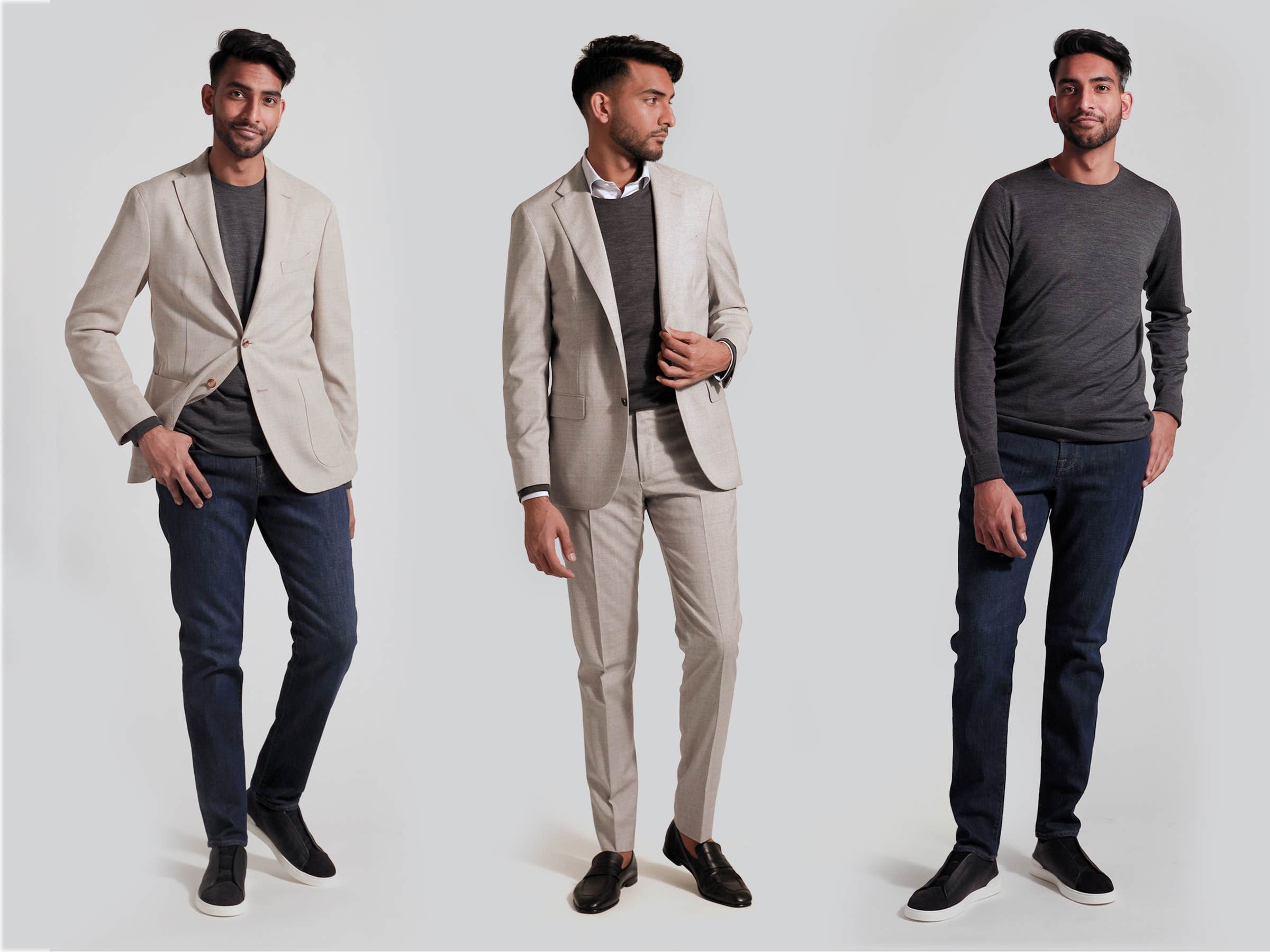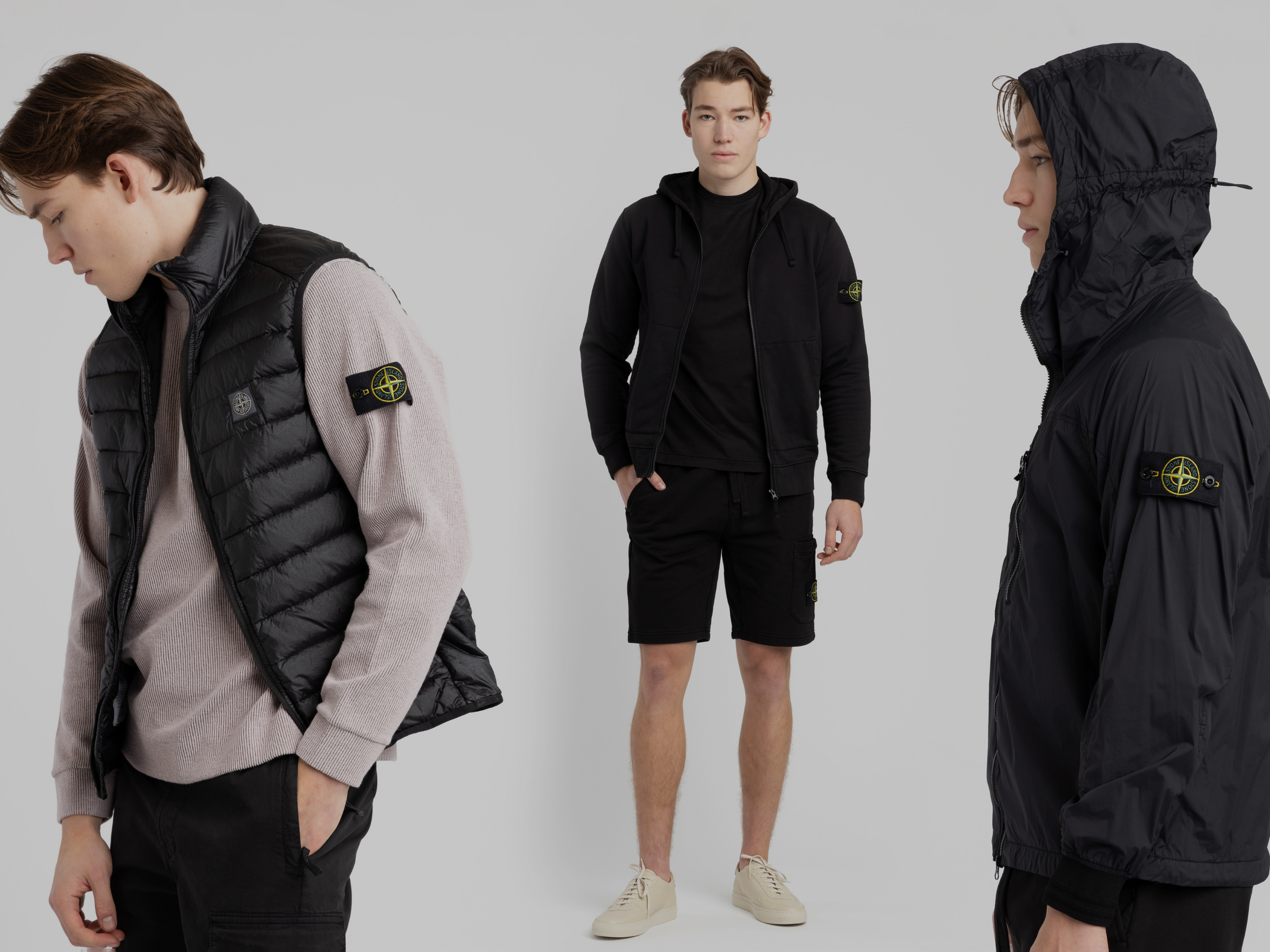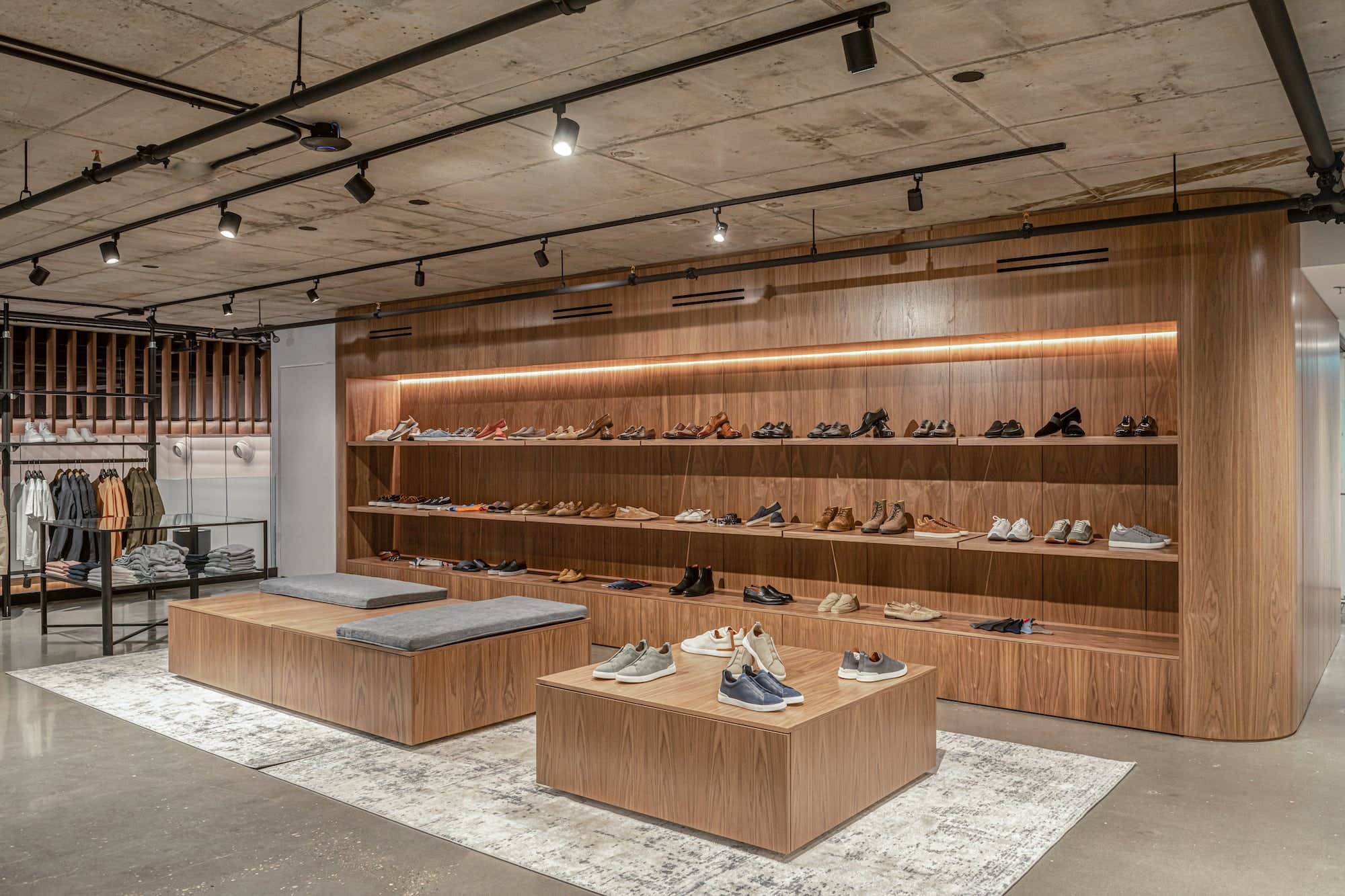Shopping for a suit can be overwhelming, especially if it’s not something you often do. You might find yourself deciding between roped or soft shoulders, determining what type of lapel you want, or figuring out what kind of pockets you want on your jacket.
We are always around to help answer any questions as you go, but we figured we’d help you get ahead of the game by defining some commonly used terms so you can come to your appointment informed.
This is the first installment in a series of glossary posts we will do, so if you’ve got any other terms you’d like defined, let us know by dropping us an email or reaching out on Instagram.
General Suit Terms
Bespoke - The process of making a garment entirely from scratch without using any pre-existing patterns.
Custom - Any item of clothing that is made to order rather than being purchased off the rack in a store. This includes bespoke and made-to-measure.
Drape - How a suit hangs off the body.
Drop - The difference in inches between your suit jacket chest width and your trouser waist size.
Made-to-measure - An item of clothing that follows a specific pattern or structure but that has been made to the precise measurements and requirements of the wearer.
Ready to wear - Sometimes known as “off the rack,” this term refers to items that have not been custom ordered and that exist as part of the regular or seasonal stock in store. These items may still require tailoring to get the right fit, such as hemming trousers or shortening sleeves on a suit jacket.
Tailored clothing - Refers to any item of clothing that is or can be made to fit the shape of a person’s body. In menswear, it typically encompasses all suits, sport jackets, trousers, and vests, but can also include any other garments such as outerwear whose seams allow for tailoring.
Three-piece suit - A suit that includes a jacket, vest, and trousers. These are typically reserved for formal occasions such as weddings, though exceptions always apply.
Two-piece suit - A suit that includes only a jacket and trousers. These are usually universal and can be worn for nearly every occasion.
Tuxedo - A formal suit that may be two or three pieces. The jacket typically has as silk or satin collar and lapel, and the trousers may have a silk stripe down the side.
Jacket Terms
Styles of jackets
Blazer - A jacket that is in between a suit jacket and a sport jacket in terms of fit and formality. It’s slightly more relaxed than a suit jacket, but not quite as relaxed as a sport jacket. Often, the distinction between a blazer and a sport jacket is so minimal that they can be used interchangeably. Traditionally, blazers were navy but you can often find them in other solid colours like grey or tan, and they usually have metal buttons.Dinner jacket - A formal jacket that is usually made from wool with satin or grosgrain lapels. Some are done in velvet instead of wool. They are typically seen in black, white, midnight blue, maroon, or dark green, though sometimes they might incorporate bold patterns.
Double-breasted - A jacket with two columns of buttons. The fabric overlaps when closed. It typically will have four or six buttons. A double-breasted suit almost always has a peak lapel.
Single-breasted - A jacket with a single column of buttons. It may have one, two, or three buttons. In two- and three-button suits, the bottom button should always remain unbuttoned.
Sport jacket - Sometimes known as a sport coat or sports jacket, depending on your region. Sport jackets are less formal than blazers and suit jackets. These shouldn’t be worn for formal events (stick with a suit) but are great for just about everything else. Sport jackets come in a wide range of fabrics, patterns, and colours and can be worn with jeans.
Suit jacket - Suit jackets are always part of a full suit (either two-piece or three-piece) and tend to be longer and more structured than a blazer or sport jacket. Typically you wouldn’t split up a suit jacket from its matching trousers, but there are some exceptions.
Lapels, Collars, and Shoulders
Collar gap - A gap in between the collar of a jacket and the wearer’s neck. This is an indication that your jacket doesn’t fit properly.Collar roll - A “roll” of fabric on the jacket at the back of the neck. This is an indication that your jacket doesn’t fit properly.
Lapel - The folded fabric on the front of a jacket that is attached to the collar.
- Notch lapel - Sometimes called a step lapel, it is sewn onto the collar at an angle creating a “notch” or a v-shape. This is a universal type of lapel and can be used for almost any occasion.
- Peak lapel - A lapel that is sewn into the collar so that it points upward, usually extending beyond the edge of the collar. Peak lapels are more fashion-forward and tend to be used on formal suits and tuxedos.
- Shawl lapel - A continuous collar without any kind of separation between the collar and the lapel. This is most often seen on tuxedos.
Roped shoulder - Sometimes known as a structured shoulder, suits with a roped shoulder have a sleeve head that extends upward beyond the shoulder, creating a lip. Neapolitan shoulders are roped with extra fabric, creating a puckered effect.
Soft shoulder - Sometimes known as an unstructured shoulder, these use very little or no padding and do not have roping. This creates a natural drape from the shoulder.
Pockets, details, and construction
Button stance - This refers to where the top button of a jacket is located. Typically it should sit between one and three fingers above the belly button.- Full canvas - The canvas is sewn into the entirety of the front panel for the most structure.
- Fused - A fused suit’s inner structural layer is glued to the fabric rather than being sewn in.
- Half canvas - The canvas is sewn only into the chest area of the jacket, making it more lightweight than a full-canvas jacket.
Flap pocket - Pockets built into the jacket with a flap covering the opening. A very versatile style of pocket.
Kissing buttons - Sometimes known as “waterfall buttons.” Buttons on the sleeve cuff that touch slightly. They may or may not be overlapping. Mostly a style choice, but kissing buttons are usually a sign of good craftsmanship.
Patch pocket - Jacket pockets that are sewn onto the outer fabric of the suit using the same suit fabric. This creates a more casual appearance but is still appropriate for most business and event use.
Pick stitch - Subtle hand stitching around the lapel, pockets, and cuffs of a suit or sport jacket. Often an indication of good craftsmanship.
Ticket pocket - A small pocket located just above the right pocket on a jacket.
Vents - Vertical slits on the back of a jacket that allows it to drape naturally and comfortably when sitting and moving. It also allows for easier access to the trouser pockets.
- Double vent - Also known as side vents. Vents on either side of the back panel of the jacket. These are more common than single vents today.
- Single vent - Also known as a centre vent. A vent down the middle of the back panel of the jacket. More often seen on American-made blazers and tends to be a bit more casual.
Welt pocket - Sometimes known as a jetted pocket. Pockets built into the jacket without a flap covering the opening. The most formal type of pockets on a suit or sport jacket.
Working cuffs - Also known as “surgeon’s cuffs.” A sleeve cuff with working buttons, initially created for surgeons who needed to roll up their sleeves but is mostly a style preference today.
Dress Pant terms
Break - The fold in the fabric at the bottom of the pant leg where it hits the shoe.- Full break - A traditional trouser length that creates a single full fold inward and results in the fabric covering just over half of the back of the shoe. If trousers have more than a full break, they are too long and need to be hemmed.
- Half break - A more contemporary trouser length that creates a slight fold inward, so the bottom of the pantleg covers only the top quarter of the back of the shoe. The ankle will still be covered when standing.
Flat-front - Trousers without pleats.
Inseam - The measurement from the inside of the pants at the crotch to the bottom of the pant leg.
Outseam - The measurement from the top of the waistband on the outside edge of the pants to the bottom of the pant leg.
Pleat - A small section of folded fabric on the front of the trousers along the waist. Pants may have a single pleat or double pleat.
Rise - The difference between the outseam and the inseam measurement.
Unfinished hem - Pants with a raw edge at the bottom that must be hemmed to the wearer’s preferred outseam before wearing.
Have a term you want us to define for you? Get in touch and we can add it to our list!



